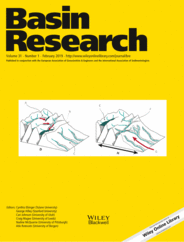
Full text loading...
To date, quantification of individual components that contribute to shallow and deep‐seated subsidence in passive margin deltas worldwide has proven problematic. A new, regional gridded chronostratigraphic dataset for the Lower Mississippi Delta region, derived from 80,928 well reports across the northern Gulf of Mexico (GOM), has bridged the disparity between geodetic mean rates measuring total land surface subsidence across annual‐to‐decadal timescales and the deep‐seated stratigraphic subsidence rates that record isostatic response over timescales of >104 years. Through a quantitative assessment of gridded chronostratigraphic surfaces, sections, and subsidence rates extending from the Middle Pleistocene (0.58 Ma) to the Late Pliocene (3.85 Ma), we identify both temporal and spatial variability in deep‐seated subsidence across the northern GOM. Targeted deep‐seated subsidence data extracted across prior GOM Holocene sea‐level sample locations have revealed more than an order of magnitude greater rates of isostatic compensation in the Mississippi depocentre versus similar GOM sea‐level control sites in Florida and Alabama, casting doubt on efforts towards a representative Holocene sea‐level curve. Spatial variability in subsidence was also assessed locally in both the strike and dip directions to assess the contributions of growth faults. Fault throw displacement magnitude was discovered to decrease with depth, accounting for less than half of the total deep‐seated subsidence record of the Middle Pleistocene. Temporal subsidence complexities were also revealed including a direct, inverse logarithmic relationship between subsidence rate and time indicating variable subsidence component controls across different timescales. Despite the spatial and temporal complexities, this dataset serves as the first regional baseline for deep‐seated subsidence rates across the northern GOM.

Article metrics loading...

Full text loading...
References


Data & Media loading...
Supplements

